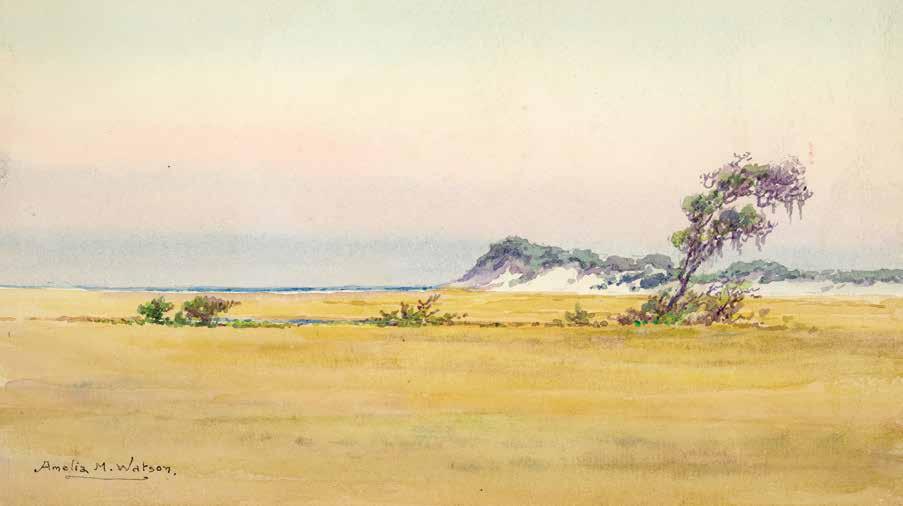
2 minute read
SSI Archives
A Work by a Woman Artist Returns
In celebration of Women’s History Month, a watercolor recently donated to the Coastal
Georgia Historical Society recalls a woman’s contribution to the arts when, at the turn of the 20th century, women were beginning to make significant progress in art as a profession.
Amelia Montague Watson was a painter, illustrator, and photographer born in East Windsor Hill, Connecticut, in 1856. At a time when few women of her class had careers outside their homes, she achieved considerable success selling her artwork, mainly watercolor landscapes, at galleries and to book publishers. She is best known for illustrating an 1896 deluxe edition of Henry David Thoreau’s travelogue, Cape Cod. Active in Boston and Hartford cultural circles, Watson taught at the Martha’s Vineyard Summer School from 1878 to 1902 and at the Hartford Art School, where she encouraged women to study “decorative design,” an expanding branch of commercial art.
A lifelong resident of Connecticut, Watson travelled widely, particularly throughout the American South, gaining inspiration for her artwork. She spent time in Florida and had a second home in Tryon, North Carolina. Watson was attracted to Coastal Georgia by an interest in the actress and abolitionist Fanny Kemble, whose influential memoir, Journal of a Residence on a Georgian Plantation 1838-1839, documented her encounter with slavery at the plantations owned by her husband, Pierce Mease Butler. In 1914-1915, Watson visited Coastal Georgia and photographed the remaining structures of the Butler plantations and surviving African Americans who had been enslaved there, as well as their descendants. Several of her photographs, now in the Lenox Library Collection of the New York Public Library, are featured in Malcolm Bell, Jr.’s comprehensive history of the Butler family, Major Butler’s Legacy. As shown here, the artist also captured local scenes in watercolor. Inscribed “The Marshes of Glynn, St. Simon’s Island,” the watercolor was found by the donor, a resident of Oregon, “in a cupboard” among her late mother’s effects and was graciously given to the Society. The photograph of Amelia Watson is courtesy of the Martha’s Vineyard Museum, which has a collection of her watercolors, correspondence, and other documents.
Coastal Georgia Historical Society presents this article and images from our archives as part of our mission to tell Coastal Georgia’s inspiring stories. The Society operates the iconic St. Simons Lighthouse Museum and the World War II Home Front Museum, housed in the Historic Coast Guard Station at East Beach. To learn more about the Society, its museums, diverse programs, and membership, please visit coastalgeorgiahistory.org.










